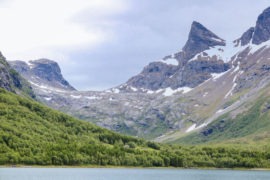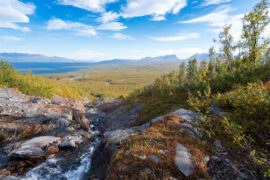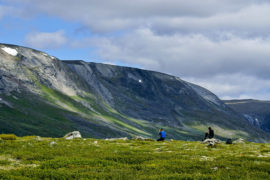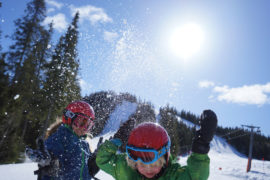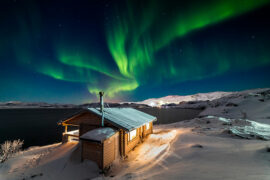With their cheeky personalities, wobbly walk and brightly coloured bills, puffins are a particularly endearing bird – and seeing them in the wild can be a real highlight of a trip to Iceland.

Known as “the clowns of the sea”, the sociable creatures we call puffins are increasingly rare and tend to nest on high cliff tops in remote spots.
The good news is that Iceland is home to the world’s largest colony of Atlantic puffins, and there are several places where you can see these appealing birds from both the land and from the sea on boat trips.
So, what time of year can you see puffins in Iceland and where is the best place to see them? Read on to find out all the lowdown on where and when to see puffins in Iceland.
How many puffins are there in Iceland?
Iceland is a hotspot for Atlantic puffins, the only species of puffin native to Europe. Sixty percent of the world’s population of puffins nest and breed in Iceland, which is more than six million birds.
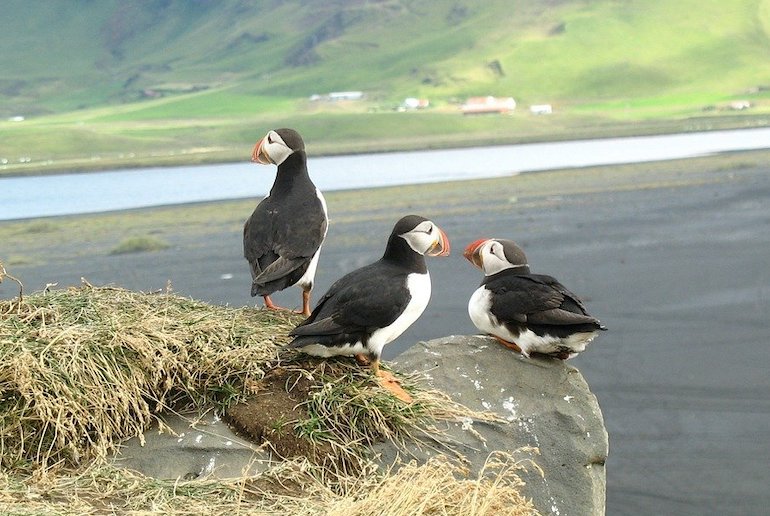
And because puffins nest in colonies, and return to breed in the colonies where they born, you can see up to tens of thousands of birds in the same place – an awesome sight.
When to see puffins in Iceland
Puffins roost out at sea, so you can only see them when they come back to land to breed and dig their burrows. The earliest you can see puffins in Iceland is around June when they start to nest. They then lay their eggs, incubate them, and remain in their colonies until the babies hatch and fledge.
This takes around four months, so the season for seeing puffins in Iceland runs from June to September. And if you’re really lucky, you may even get to see the fluffy baby pufflings – yes, they really are called pufflings! – as they begin to fledge.
Where to see puffins in Iceland
So where are the best places to see puffins in Iceland? Since puffins tend to nest in remote isolated spots, seeing them from the land can involve a long drive and an arduous trek to reach the colony. Often the easiest way is to take a boat trip, which can get you some of the most inaccessible nesting sites in a short time – and you may even see some whales and/or dolphins on the way!
Akurey island
If you’re short on time, the quickest way to see a teeming puffin colony is to take a boat trip from the Old Harbour in Reykjavík out to the islands of Akurey or Lundey.
The islands are part of a nature reserve so you can’t land on them, but the hour-long boat trip gets close enough for you to get good views of the birds. Waterproofs and binoculars are included!
Dyrhólaey Rock Arch

One of the most easily accessible places to see the puffins from the land is the Dyrhólaey Rock Arch on Iceland’s south coast, less than three hours’ drive from Reykjavik. From May to September, the cliffs around this dramatic sea arch are full of lively puffins, with their distinctive white chests, black backs and orange legs.
Ingólfshöfði Cape
Further along the south coast from Dyrhólaey, the Ingólfshöfði Cape and Nature Reserve is also a popular puffin nesting site in summer, as well as being home to an impressive array of other birds including guillemots, razorbills, fulmars and kittiwakes.

Because the puffin colony is quite remote, you need to cross 6km of marshy swamplands and sands, and be prepared for a hike.
The best way to get to the colony is on a guided tour, which includes a fun trip over the wetlands on a tractor-pulled hay cart with a knowledgable guide who’ll take you across the sand dunes and over grassland to the best puffin-viewing spots.
The Vestmannaeyjar
It may not be the most accessible, but the island of Heimaey in the Vestmannaeyjar (the Westmann islands) is easily the best place to see puffins in Iceland. The world’s largest puffin colony, this archipelago off Iceland’s southwest coast is home to more than a million puffins each summer.
Heimaey is the only inhabited island in the archipelago, and can be reached via a short flight or a 3-hour ferry trip from Iceland’s main island. Once on Heimaey, you can take a guided tour round the island to Stórhöfði, Iceland’s biggest puffin colony and one of Europe’s windiest spots!
Látrabjarg
Europe’s most westerly point, the steep sea-cliffs of Látrabjarg are riddled with puffin burrows as well as being home to world’s largest colony of razorbills. Paths run along the cliff-tops giving excellent views of the nesting birds – but be careful not to get too close to the edge or step in a burrow!

Traditionally locals used to abseil down the cliffs here to collect the puffin eggs and trap the birds for food – though this is not recommended nowadays!
The Tjornes peninsula
A few kilometres north of Húsavík, the Tjornes Peninsula is home to a series of beaches just off the coast road. Bird-watching trails lead down to the coast, where you can see puffins nesting, purple sandpipers, black guillemots and gannets, plus the odd basking seal.

And if you don’t have your own transport, you can take a boat trip from Húsavík out into Skjálfandi Bay to see the puffins, plus whales and dolphins too.
Can you eat puffins in Iceland?
Well, it may not seem very appealing, but yes puffin is a traditional food in Iceland. Smoked puffin is the most usual way of eating it, though raw puffin heart is a delicacy that is considered a treat by older Icelanders.
Puffin has quite a gamey flavour, and since it’s officially a vulnerable species, few Icelanders eat it nowadays. Conservationists are campaigning against eating it, and most of Iceland’s puffin meat is now sold to tourist restaurants.
If you are determined to try it, you can buy it in some shops and supermarkets, and there are a few restaurants that still serve it.
The restaurant at the Hotel Ranga in the south of island, for example, has smoked puffin with apple mousse and garlic mayonnaise on its menu, while the traditional Reykjavik restaurant Þrir Frakkar (meaning Three Coats) serves a dish of smoked puffin breast with mustard sauce.
And if you fancy some cute, more environmentally sensitive puffin action in Iceland, check out this video.
See also:
The best boat tours from Reykjavik
How to visit Iceland cheaply
Day tours from Reykjavik

